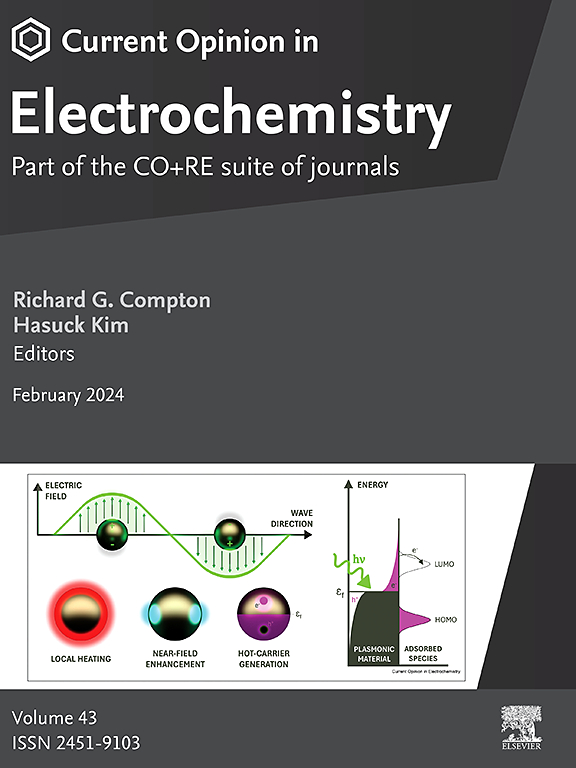Metallic nanoparticle-based glassy carbon electrodes for smart biosensing
IF 6.9
2区 化学
Q1 CHEMISTRY, PHYSICAL
引用次数: 0
Abstract
Glassy carbon electrodes (GCEs) remain a cornerstone in electrochemical biosensing due to their conductivity, stability, and reliability for surface modifications. Incorporation of metallic nanoparticles (MNPs) onto GCEs has significantly improved biosensor performance, particularly in terms of sensitivity, selectivity, and signal transduction. Despite extensive applications using noble and transition metal nanostructures, a systematic understanding of how MNP characteristics such as morphology, composition, and deposition methods impact biosensing across enzymatic, immunological, and nucleic acid platforms remains underexplored. This review critically examines recent advances in MNP-GCE systems, emphasizing nanomaterial design, surface functionalization strategies, and incorporating emerging smart biosensing trends. It discusses the integration of artificial intelligence (AI), machine learning (ML), and Internet of Things (IoT) technologies for next-generation smart sensing applications. Key challenges such as reproducibility, real-sample compatibility, and commercial scalability are highlighted, along with future directions for advancing robust, intelligent biosensors for point-of-care and digital healthcare applications.
用于智能生物传感的金属纳米颗粒基玻碳电极
由于其导电性、稳定性和表面修饰的可靠性,玻璃碳电极(GCEs)仍然是电化学生物传感的基石。金属纳米颗粒(MNPs)与gce的结合显著提高了生物传感器的性能,特别是在灵敏度、选择性和信号转导方面。尽管贵金属和过渡金属纳米结构得到了广泛的应用,但对MNP的形态、组成和沉积方法等特征如何影响酶、免疫和核酸平台上的生物传感的系统理解仍有待探索。这篇综述严格审查了MNP-GCE系统的最新进展,强调纳米材料设计,表面功能化策略,并结合新兴的智能生物传感趋势。它讨论了人工智能(AI)、机器学习(ML)和物联网(IoT)技术在下一代智能传感应用中的集成。重点介绍了再现性、真实样品兼容性和商业可扩展性等关键挑战,以及为医疗点和数字医疗保健应用推进稳健、智能生物传感器的未来方向。
本文章由计算机程序翻译,如有差异,请以英文原文为准。
求助全文
约1分钟内获得全文
求助全文
来源期刊

Current Opinion in Electrochemistry
Chemistry-Analytical Chemistry
CiteScore
14.00
自引率
5.90%
发文量
272
审稿时长
73 days
期刊介绍:
The development of the Current Opinion journals stemmed from the acknowledgment of the growing challenge for specialists to stay abreast of the expanding volume of information within their field. In Current Opinion in Electrochemistry, they help the reader by providing in a systematic manner:
1.The views of experts on current advances in electrochemistry in a clear and readable form.
2.Evaluations of the most interesting papers, annotated by experts, from the great wealth of original publications.
In the realm of electrochemistry, the subject is divided into 12 themed sections, with each section undergoing an annual review cycle:
• Bioelectrochemistry • Electrocatalysis • Electrochemical Materials and Engineering • Energy Storage: Batteries and Supercapacitors • Energy Transformation • Environmental Electrochemistry • Fundamental & Theoretical Electrochemistry • Innovative Methods in Electrochemistry • Organic & Molecular Electrochemistry • Physical & Nano-Electrochemistry • Sensors & Bio-sensors •
 求助内容:
求助内容: 应助结果提醒方式:
应助结果提醒方式:


